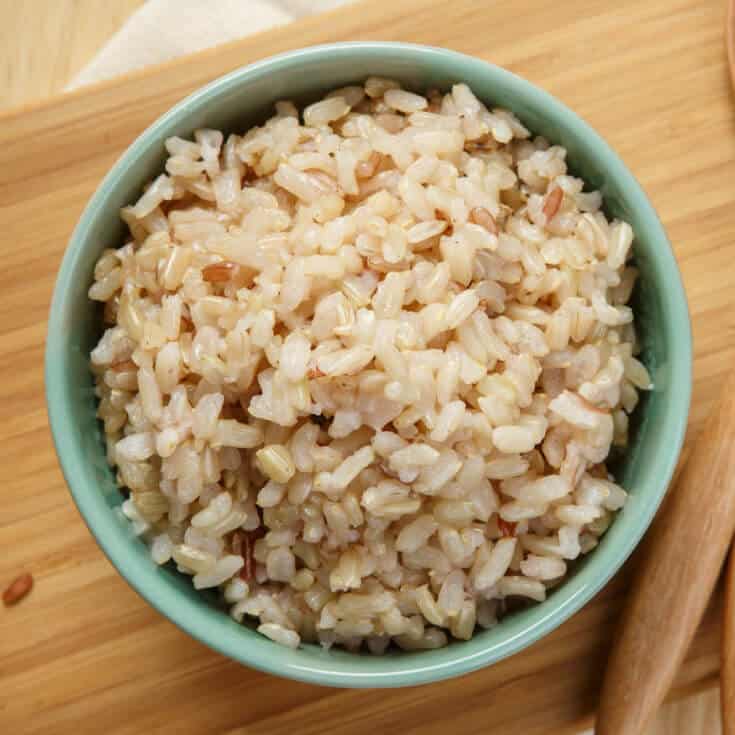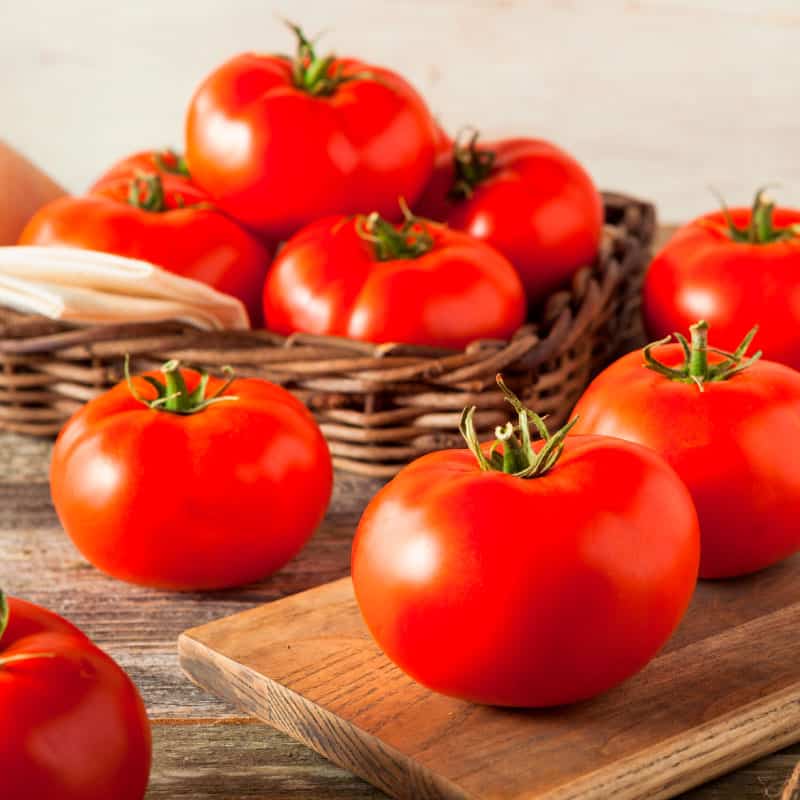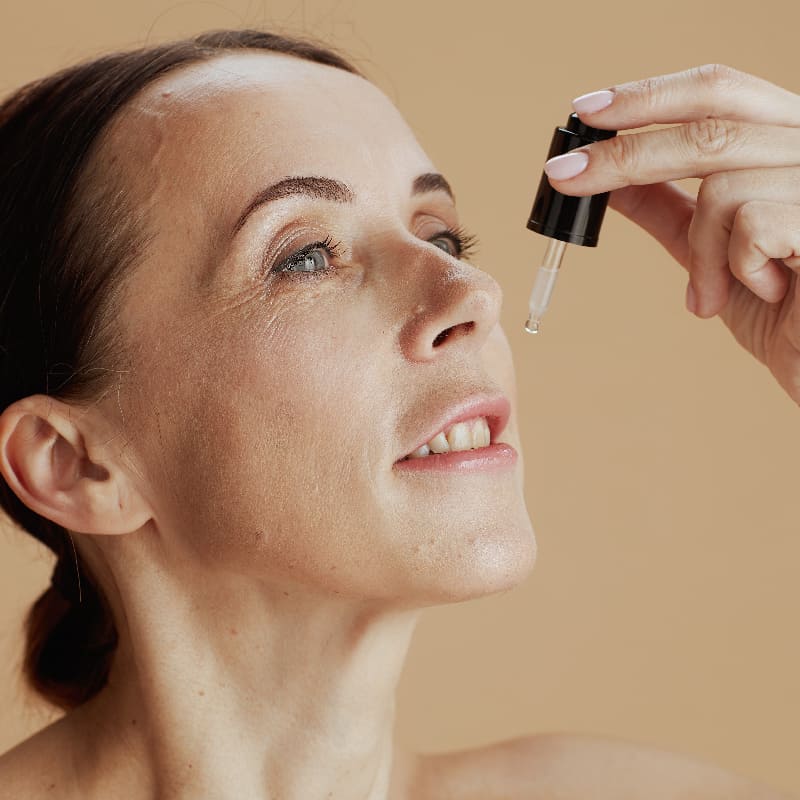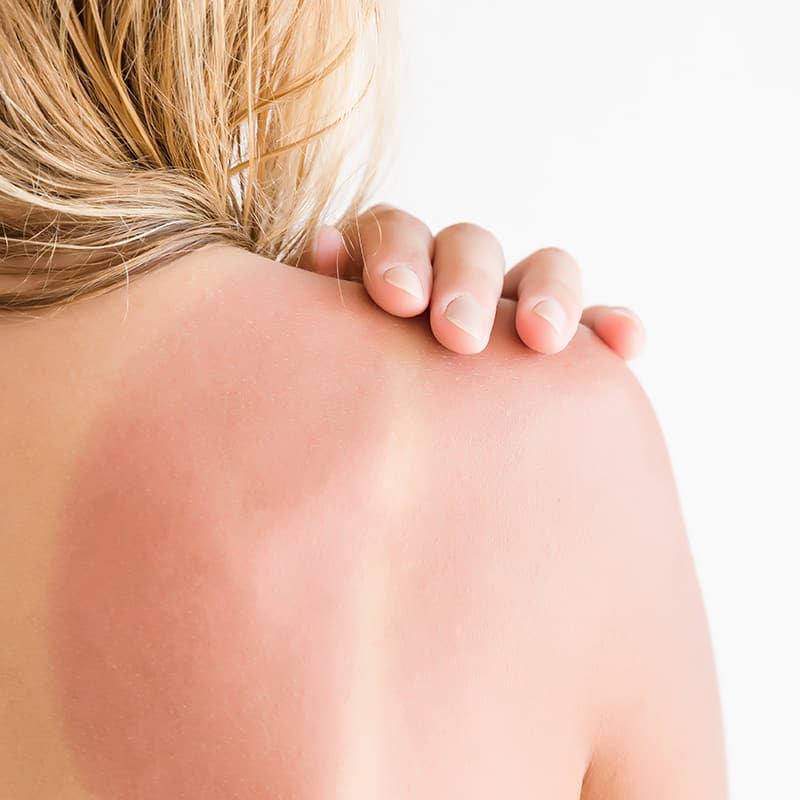This Dr. Axe content is medically reviewed or fact checked to ensure factually accurate information.
With strict editorial sourcing guidelines, we only link to academic research institutions, reputable media sites and, when research is available, medically peer-reviewed studies. Note that the numbers in parentheses (1, 2, etc.) are clickable links to these studies.
The information in our articles is NOT intended to replace a one-on-one relationship with a qualified health care professional and is not intended as medical advice.
This article is based on scientific evidence, written by experts and fact checked by our trained editorial staff. Note that the numbers in parentheses (1, 2, etc.) are clickable links to medically peer-reviewed studies.
Our team includes licensed nutritionists and dietitians, certified health education specialists, as well as certified strength and conditioning specialists, personal trainers and corrective exercise specialists. Our team aims to be not only thorough with its research, but also objective and unbiased.
The information in our articles is NOT intended to replace a one-on-one relationship with a qualified health care professional and is not intended as medical advice.
Vitamin E Benefits the Skin, Hair, Eyes and Heart
April 23, 2022

What if I told you there was a vitamin that plays a role in increasing antioxidant status, preventing free radical damage,and naturally slowing aging? I’m talking about vitamin E, and believe it or not, vitamin E benefits don’t end there.
Most people aren’t aware that “vitamin E” is a collective description for eight compounds, four tocopherols and four tocotrienols.
It is found only in plant foods, including certain vegetable oils, nuts, grains, fruits and wheat germ. It’s also available as a supplement for those who could use even more.
Positive effects of vitamin E include its ability to support proper functions of many organs, enzymatic activities and neurological processes. For example, consuming enough of this antioxidant vitamin, ideally from vitamin E-rich foods but also supplements, can include helping reduce the risk of prostate cancer, coronary heart disease and mild cognitive impairment.
Getting enough vitamin E seems to be especially critical for the very young (fetuses or infants), the elderly, and women who are or may become pregnant.
Let’s find out how you can get all these great vitamin E benefits, along with the best sources, plus signs of deficiency to be aware of.
Top 11 Vitamin E Benefits
Supplementing and consuming vitamin E-rich foods has been found to be associated with some of the following health benefits:
1. Balances Cholesterol
Studies have shown that certain isomers of vitamin E serve as a protective antioxidant that fights cholesterol oxidation. This is because vitamin E can protect against free radical damage in the body, which leads to cholesterol oxidation.
Tocotrienol isomers of vitamin E have three double bonds that positively impact cardiovascular health due to their ability to reduce activity of an enzyme that controls cholesterol production/synthesis (called HMG-CoA reductase).
Tocotrienol isomers can also prevent cell adhesion and therefore slow down progression of atherosclerosis, or hardening/thickening of the arteries.
It’s important to note synthetic vitamin E doesn’t seem to have the same benefits of natural forms. Too much alpha-tocopherol can actually interfere with the cholesterol-lowering action of delta and gamma-tocotrienols, which are the two most bioactive tocotrienols and the types linked to cardioprotective activities.
2. Fights Free Radicals and Prevents Disease Development
Free radicals fight and break down healthy cells in your body, and this can increase the risk for cardiovascular disease and cancer.
Certain isomers of vitamin E have powerful antioxidant abilities that have the power to reduce free radical damage, fight inflammation and oxidative stress, and therefore help naturally slow aging.
Studies have shown that vitamin E can also support the immune system, may play a role in cancer prevention and increases protection against some infections.
Recent research suggests that for immune enhancement and antioxidant effects, the isomers alpha-tocotrienol, gamma-tocotrienol and, to a lesser degree delta-tocotrienol, seem to be the most effective.
3. Repairs Damaged Skin
Vitamin E benefits skin by strengthening the capillary walls and improving moisture and elasticity, acting as a natural anti-aging nutrient within your body.
Studies have shown that vitamin E reduces inflammation both within your body and on your skin, which means consuming more might contribute to healthy, youthful skin. The antioxidant properties are also helpful when you’re exposed to cigarette smoke or ultraviolet rays from sunlight, protecting against skin cancer.
Taking vitamin E with vitamin C fights skin inflammation after exposure to UV radiation and can also be useful in decreasing signs of acne and eczema.
Vitamin E is absorbed by the epidermis layer of the skin and can be used to treat sunburn, which is one of the leading causes of skin cancer, among other factors. Because it speeds up cell regeneration, it can be used to treat scars, acne and wrinkles. This makes your skin look healthier and younger.
4. Thickens Hair
Does vitamin E stop hair loss? As an antioxidant vitamin, it helps decrease environmental damage to your hair. It can also promote circulation to the scalp.
Vitamin E oil can retain the natural moisture in your skin, which helps your scalp from becoming dry and flakey. This oil also makes your hair look healthier and fresher.
You can apply a few drops of vitamin E oil on your hair, especially if it looks dry and dull.
5. Balances Hormones
Vitamin E can play a crucial role in balancing your endocrine system and nervous systems, naturally working to balance hormones.
Symptoms of a hormonal imbalance may include PMS, weight gain, allergies, urinary tract infections, changes in the skin, anxiety and fatigue. By keeping your hormones in balance, you will find it easier to maintain a healthy weight, keep a regular menstrual cycle and find yourself feeling more energetic.
6. Helps PMS Symptoms
Taking a vitamin E supplement two to three days before, and two to three days after, a menstrual period may reduce cramping, anxiety, cravings and other PMS symptoms.
Vitamin E can decrease pain severity and duration, and it can reduce menstrual blood loss.
7. Improves Vision
Vitamin E can defend the eyes against damage and may help decrease the risk of age-related macular degeneration, which is a common cause of blindness. Keep in mind, in order for vitamin E to be effective for vision, it must also be consumed with adequate intakes of vitamin C, beta-carotene and zinc.
It’s also been found that taking high doses of vitamin E and vitamin A daily seems to improve healing and vision in people undergoing laser eye surgery.
8. May Help People with Cognitive Decline/Alzheimer’s Disease
Research shows that the anti-inflammatory activity of tocotrienols may contribute to their protection against Alzheimer’s disease and other forms of cognitive decline.
Vitamin E, taken with vitamin C, might also decrease the risk of developing several forms of dementia.
Some studies (although not all) suggest vitamin E may slow down the worsening of memory loss and functional decline in people with moderately severe Alzheimer’s disease or other neurodegenerative disorders. It may also delay the loss of independence and the need for a caregiver or assistance by supporting overall cognitive function.
However, study results on this benefit have been mixed and are still mostly “inconclusive.”
9. May Lower Cancer Risk and Improve Effects of Medical Treatments
Vitamin E is sometimes used to lessen the harmful effects of medical treatments, such as radiation and dialysis for treating cancer. It’s also used to reduce unwanted side effects of drugs that may cause hair loss or lung damage.
Certain isomers of vitamin E have also been tied to cancer protection. Certain animal studies have found evidence of suppression of tumor growth using oral doses of tocotrienols.
While there’s more to learn about how exactly this works, several mechanisms of action are thought to be involved — inducing cancer cell death, turning off genes tied to cancer, inhibiting angiogenesis and stopping abnormal growth of blood vessels inside a tumor.
In some animal studies, vitamin E’s cancer-protective abilities have been demonstrated in cases of breast cancer, prostate cancer, hepatic cancer and skin cancers. That said, not all clinical trials have found an association between higher dietary or supplemental vitamin E intake and reduced cancer risk.
Vitamin E seems to have an especially interesting relationship with prostate cancer risk. Trials focused on the link between vitamin E and prostate cancer have shown conflicting results.
In one study, smokers and men who had quit experienced statistically significant (71% less) reductions in the risk of prostate cancer when taking up to 400 IU/day of vitamin E. In another clinical trial, male smokers taking daily vitamin E supplements in dosages of 111 IU/day of synthetic vitamin E for up to eight years had 32% lower risk of developing prostate cancer compared to men who did not take the supplements.
On the other hand, a large, randomized, clinical trial, called the SELECT trial, found that daily supplementation with 400 IU of synthetic vitamin E (with or without selenium) did not reduce the risk for prostate cancer in healthy men age 50 and older. In fact, men who had taken the vitamin E had a 17% higher risk of prostate cancer compared to men only taking placebos.
10. Improves Physical Endurance and Muscle Strength
Vitamin E can be used to improve your physical endurance. It can increase your energy, reduce the level of oxidative stress on your muscles after you exercise and improve your muscle strength.
Additionally, it may help eliminate fatigue by promoting blood circulation and strengthening capillary walls.
11. Important During Pregnancy for Growth and Development
Vitamin E is critical during pregnancy and for proper development in infants and children because it protects critical fatty acids from being damaged.
Some experts believe that the biggest need for vitamin E is during the 1,000-day window that begins at conception, since it impacts early stages of neurologic and brain development that can only happen during this one specific period.
Because of this, it’s recommended that pregnant women, nursing mothers and children up until the age of 2 take a natural, food-based supplement to make sure they’re getting enough to prevent abnormalities.
Risks, Side Effects, Interactions
Vitamin E Deficiency:
Vitamin E deficiencies (meaning intake of all isomers) have long been thought to be rare, and when they do happen, it’s commonly believed that it’s almost never caused by a poor diet. However, some experts believe that many people today are actually not getting enough vitamin E from their diets in natural form, especially too little tocotrienols.
When a deficiency does occur, symptoms can include loss of muscle coordination and impaired vision and speech.
There are specific situations that may lead to a vitamin E deficiency. Usually this is due to problems with absorption of nutrients and other metabolic issues. At risk populations include:
- Premature infants born weighing less than 3.5 pounds. A pediatrician who specializes in the care of newborns will typically evaluate the nutritional needs of an infant to help spot and treat this early.
- People with fat absorption problems, which is a common problem for those who struggle with inflammatory bowel disease, Crohn’s disease, liver disease or pancreatic insufficiency.
- Those who have been diagnosed with cystic fibrosis.
- People who have had gastric bypass surgery.
Potential Side Effects of Taking Too Much:
What happens if you take vitamin E every day? Vitamin E may be unsafe when taken in very high amounts, especially for people who have conditions with blood clotting or heart disease or diabetes. If you suffer from these health issues, do not take doses of 400 IU/day or more.
Most people do not experience any side effects when taking the recommended dose, but in high doses there are adverse reactions that have been recorded.
Some studies show that taking high doses of vitamin E, which are between 300–800 IU each day, might increase the chance of having a serious stroke called hemorrhagic stroke by 22 percent. One serious side effect of too much vitamin E is an increased risk of bleeding, especially in the brain.
Avoid taking supplements containing vitamin E or any other antioxidant vitamins immediately before and following angioplasty, a type of heart procedure. These vitamins seem to interfere with proper healing.
Supplementing with very high levels of vitamin E could potentially lead to the following health concerns:
- Heart failure in people with diabetes.
- Worsened bleeding disorders.
- Increased risk for head, neck and prostate cancers returning among people who previously had these cancers.
- Increased bleeding during and after surgery.
- Increased chance of death after a heart attack or stroke.
Some studies have found that vitamin E supplements can also be harmful to women who are in the early stages of pregnancy. Women who take high doses of vitamin E supplements during their first eight weeks of pregnancy may increase the risk of congenital heart defects.
High doses of vitamin E can also sometimes lead to:
- nausea
- diarrhea
- stomach cramps
- fatigue
- weakness
- headache
- blurred vision
- rash
- bruising
- bleeding
Topical vitamin E can irritate some people’s skin, so try a small amount first, and make sure you don’t have a sensitivity.
Interactions:
Vitamin E supplements can slow down blood clotting, and when you use medications that also slow clotting, you may increase the chances of bruising and bleeding.
Some medications that slow blood clotting include:
- Aspirin
- Clopidogrel
- Ibuprofen
- Warfarin (Coumadin). This drug in particular is used to slow blood clotting. Taking vitamin E with warfarin can increase your chances of bruising and bleeding, so be sure to have your blood checked regularly in order to regulate your dosing.
Medications that are used for lowering cholesterol may also interact with vitamin E. It’s not known if taking vitamin E alone decreases the effectiveness of some cholesterol-lowering medications, but it does seem to affect cholesterol when taken with beta-carotene, vitamin C and selenium.
Best Foods Sources
What food is highest in vitamin E? Nuts, seeds and whole grains are among the top sources.
Keep in mind that because vitamin E is fat-soluble, it’s best to consume it along with a source of fat, such as olive oil. (Nuts and seeds naturally contain fat, which helps with its absorption.)
These vitamin E foods can help you to meet your daily needs:
- Sunflower Seeds: 1 cup — 33.41 milligrams (220 percent)
- Almonds: 1 cup — 32.98 milligrams (218 percent)
- Hazelnuts: 1 cup — 20.29 milligrams (133 percent)
- Wheat Germ: 1 cup plain, uncooked — 18 milligrams (120 percent)
- Mango: 1 whole raw — 3.02 milligrams (20 percent)
- Avocado: One whole raw — 2.68 milligrams (18 percent)
- Butternut Squash: 1 cup cooked and cubed squash — 2.64 milligrams (17 percent)
- Broccoli: 1 cup cooked — 2.4 milligrams (12 percent)
- Spinach: ½ cup cooked or about 2 cups uncooked — 1.9 milligrams (10 percent)
- Kiwi: 1 medium — 1.1 milligrams (6 percent)
- Tomato: 1 raw — 0.7 milligram (4 percent)
How to Get Enough of the Different Vitamin E Isomers (Including Tocotrienols):
Most food sources in the typical person’s diet are high in vitamin E isomers like gamma-tocopherol and to a lesser degree alpha-tocopherol.
This is especially true of oils derived from major crops like soybean, corn, cottonseed and sesame seed, which provide about 80 percent of the vitamin E isomers most people in the U.S. get from their diets. These oils contain between three to five times as much gamma-tocopherol compared alpha.
As mentioned above, it’s harder to get tocotrienols from your diet, as sources are far less common or available. The Linus Pauling Institute recommends aiming for small amounts of tocotrienol vitamin E near 140 milligrams/day, with an average effective dose for immune protection and other benefits considered to be between 200–400 milligrams/day.
Here are tips on finding the best sources:
- Although it’s very hard to find at this time, the seed of the annatto tree (Bixa orellana), which is a tropical plant, contains very high levels of tocotrienols, of which 90 percent are delta-tocotrienol and 10 percent gamma-tocotrienol.
- Other good sources are rice oil, palm oil and rice bran oil, along with peanuts, pecans and walnuts.
- Some others that are more common include oats, rye and barley cereal grains.
- Another easy way to get some vitamin E benefits from your diet is to add just a tablespoon of wheat germ oil to any recipe.
Related: Is Peanut Oil Good or Bad for Health? Separating Fact vs. Fiction
Supplements and Dosage
How much vitamin E do you need daily? The recommended dietary allowance (RDA) of vitamin E, according to the USDA, is 15 milligrams to 19 milligrams per day for adults (or at least 22.5 IU daily).
Forms:
There are eight major isomers of vitamin E. Most of the health benefits of vitamin E described above come from studies involving only the form of vitamin E called alpha-tocopherol.
Recently, researchers have focused more attention on other forms of vitamin E as well, with particular focus on tocotrienol, which some consider the “the 21st century vitamin E.”
Alpha- and beta-tocotrienols have been found to be the least active forms overall, while delta- and gamma-tocotrienols are the most active.
Findings suggest that it’s not that alpha-tocopherol is harmful, but it may interfere with absorption of other forms of vitamin E, including other tocopherols and tocotrienols that are needed to defend against cardiovascular disease and cognitive impairment.
What does all of this mean regarding the types of vitamin E in your diet? It’s best to get a variety of vitamin E isomers from your diet, given that different types have different benefits.
Tocotrienols have proved to contain some exceptional benefits that are not shared by other forms. Today, the brightest spot for tocotrienol research is in chronic conditions, such as cardiovascular disease, metabolic syndrome, cancer and osteopenia/osteoporosis.
Finally, it’s also best to obtain vitamin E naturally from foods rather than from vitamin e supplementation. Synthetic vitamin E from low-quality supplements or processed foods is usually in the form of either gamma-tocopherol or alpha-tocopherol.
Dosage Recommendations:
The recommended dietary allowance for vitamin E (including different isomers) includes the amount you get from both foods and supplements. Recommendations for different age groups are listed below:
Children:
- 1–3 years: 6 mg/day (9 IU)
- 4–8 years: 7 mg/day (10.4 IU)
- 9–13 years: 11 mg/day (16.4 IU)
Females:
- 14 years and up: 15 mg/day (22.4 IU)
- Pregnant: 15 mg/day (22.4 IU)
- Breast-feeding: 19 mg/day (28.5 IU)
Males:
- 14 years and up: 15 mg/day (22.4 IU)
Speak to a doctor before taking more than these tolerable upper intake dosages:
- 1–3 years: 200 mg/day (300 IU)
- 4–8 years: 300 mg/day (450 IU)
- 9–13 years: 600 mg/day (900 IU)
- 14–18 years: 800 mg/day (1,200 IU)
- 18 years and up: 1,000 mg/day (1,500 IU)

Conclusion
- Vitamin E is a collective description for eight compounds, four tocopherols and four tocotrienols, and they provide different benefits. It’s best to get a variety of vitamin E isomers from your diet, given that different types have different benefits.
- What are benefits of vitamin E? It acts as an antioxidant and helps fight free radicals and inflammation.
- It can help in balancing cholesterol, repairing damaged skin, thickening hair, balancing hormones, helping PMS symptoms, improving vision, helping people with Alzheimer’s, and offering protection against prostate and breast cancers.
- Nuts, seeds and whole grains are the best sources. What fruits and veggies are rich in vitamin E? Good sources include mango, avocado, butternut squash, broccoli, spinach, kiwi and tomato.
- It’s safest and most beneficial to get this vitamin from your diet.
- Can I take vitamin E capsules every day? It may be unsafe when taken in very high amounts, especially for people who have conditions such as heart disease or diabetes. If you suffer from these health issues, do not take doses of 400 IU/day or more.














